AI+GPU DePIN is currently a hot topic in the Web3 industry and is also considered an important track that may lead to industrial change.
The basic logic of AI+GPU DePIN is to use a large number of GPUs distributed globally to form a decentralized physical infrastructure network (DePIN) to provide computational power support for AI training and usage.
From the current development of AI products, this track has great potential. However, realizing a network where miners use GPUs to access and mine is relatively simple, and the challenge lies in truly building a valuable and in-demand network.
Aethir is one of the DePIN networks that has attracted market attention. On March 20, Aethir sold 60,000 nodes in just 2 hours, with a value exceeding $92 million calculated at the price of ETH at that time.
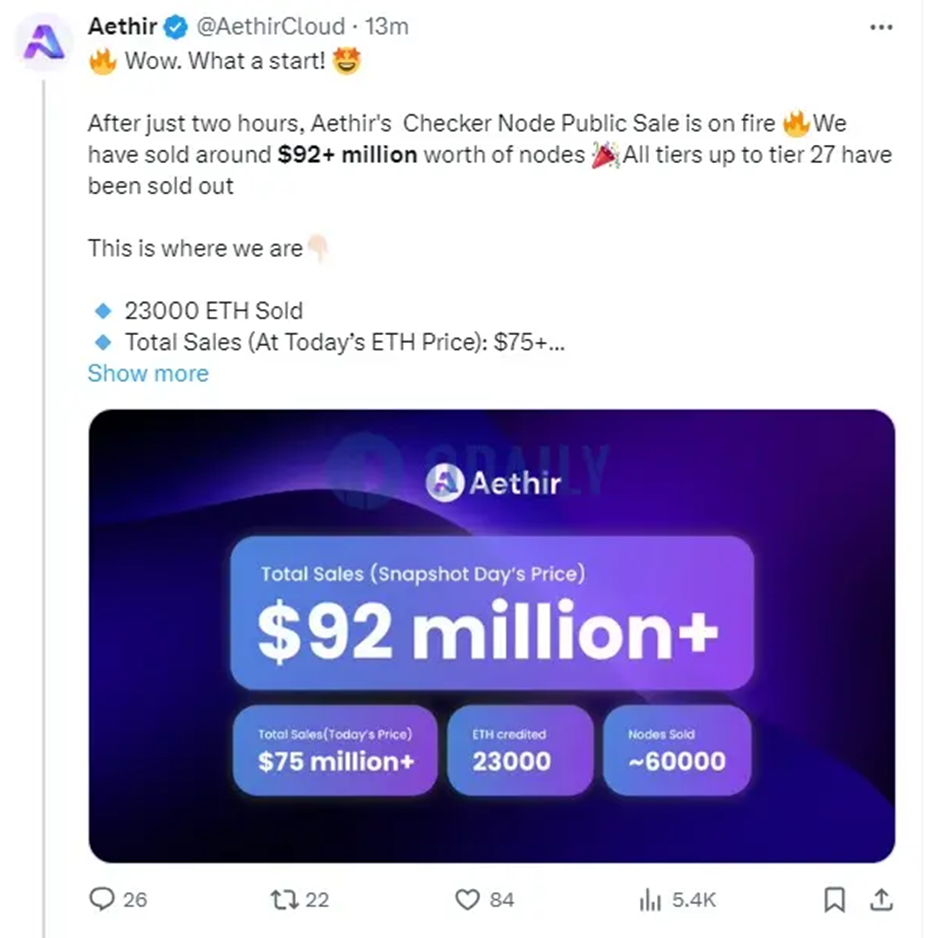
The initial selling price of Aethir nodes was 0.1259 ETH, which rose to 1.8232 ETH in May, an increase of 14 times, with a total sales amount of $130 million.
Next, this article will delve into the application scenarios, technical implementation, and ecosystem of Aethir to explore the reasons why the project is favored by the market.
➤ Application Scenarios and Prospects of Aethir
❚ AI Training and Inference
Although it is no longer necessary to demonstrate the prospects of AI through data, the AI industry is still in its early stages of development and has enormous potential.
In an article published by OpenAI in 2018, it was stated, "Three factors driving AI progress: algorithm innovation, data, and computational power available for training." "From 2012 to 2018, the amount of computation used for AI training doubled every 3.4 months. Over 6 years, computational power increased by 300,000 times."
On the other hand, an AI report by CSET pointed out, "Excessive demand has driven GPU prices to double or triple the retail price. In the second quarter of 2021, the GPU shipment volume was 123 million units, with Nvidia accounting for 15.23% of the total, indicating that Nvidia sold approximately 75 million GPUs per quarter. Once manufactured, most GPUs are used for non-AI applications, such as personal computers, gaming, or cryptocurrency mining."
The conclusion is: GPU supply falls short of demand, especially for AI computing.
Computational power will limit the evolution and development of AI programs, especially for early-stage AI projects. Purchasing computational power at the initial stage of AI projects will bring significant cost pressure and economic risks.
As a decentralized GPU DePIN network, Aethir can meet the computational power needs of AI products, especially helping early-stage AI projects through algorithm training. Initial AI projects have a strong demand for third-party computational power during the training phase.
On one hand, Aethir provides decentralized computational power support for AI product training and usage, which is beneficial for the development of the AI industry. On the other hand, it provides mining opportunities for idle scattered computational power.
This is the fundamental significance of the Aethir DePIN network—integrating GPU resources in a decentralized manner to maximize the application and value of GPU computational power.
❚ Cloud Gaming
What is cloud gaming?
Traditional games require computational and rendering tasks to be executed on the client side. This is why many gamers spend a lot of money to buy top-notch graphics cards.
However, cloud gaming is different. The advantage of cloud gaming is that it does not require high hardware requirements on the player's client side. It can run across various devices such as Android, Apple, and PC.
This is because the computational and rendering tasks of cloud gaming are executed on cloud servers, making it easier for players on client devices. Ordinary computers, mobile phones, and other devices can play cloud games.
The GPUs on Aethir's DePIN network can serve as cloud servers to execute the computational and rendering tasks of cloud gaming.
Cloud gaming has the advantage of low entry barriers and cross-platform operation, making it a blue ocean market at present.

According to a report by fortunebusinessinsights, the North American cloud gaming market has shown stable growth since 2019 and is predicted to continue. "The global cloud gaming market size is expected to reach $5.76 billion in 2023 and is projected to grow to $126.62 billion by 2032, with a compound annual growth rate of 37.9% during the forecast period."
❚ Virtual Reality and Internet of Things
In addition to AI and gaming, AR (Augmented Reality)/VR (Virtual Reality)/MR (Mixed Reality)/XR (Extended Reality) products also require large-scale computational power, and Aethir can also serve as a computational network for such products.
As a decentralized physical infrastructure network, DePIN itself belongs to the Internet of Things. In practical applications, various IoT devices such as sensors, smartphones, cars, home appliances, etc., have a demand for Aethir's distributed computational power when needed for computation.
➤ Technical Implementation of Aethir
❚ DePIN Network
As a DePIN network, Aethir consists of three types of nodes (i.e., miners): containers, indexers, and checkers, which cooperate and supervise each other, forming a stable and secure decentralized technical architecture.
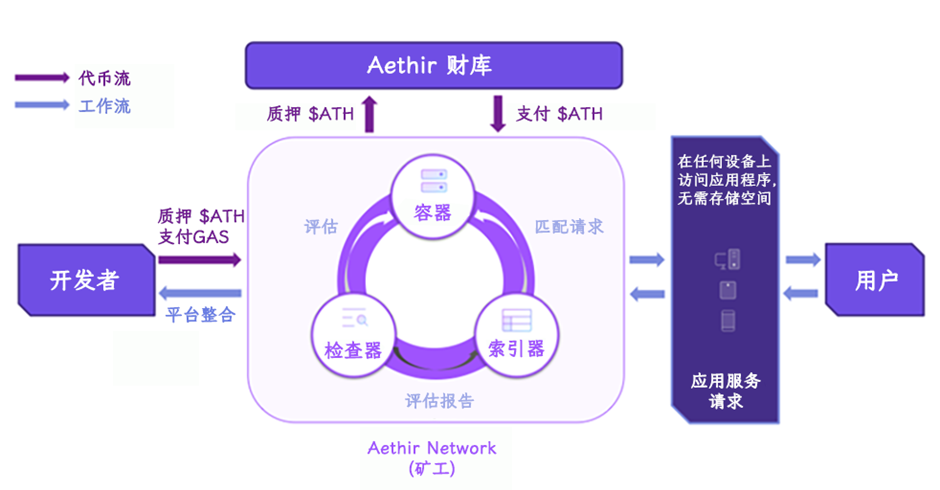
• Containers
Responsible for real-time execution of users' remote computational and rendering tasks. The core hardware of containers is GPUs, which provide different computational power for AI program operations and cloud gaming rendering based on different performance of GPUs.
• Indexers
Responsible for indexing and matching suitable containers to execute tasks based on user requirements. When matching, it comprehensively considers factors such as demand, container status, service quality, network latency, and costs to ensure that users obtain efficient and smooth computational and rendering experiences, while maximizing the utilization of container nodes globally.
• Checkers
Responsible for evaluating the work quality of containers.
Checkers randomly inspect container nodes during registration, standby, and task execution. Additionally, checkers monitor the performance of containers, including computational power, response time, network latency, and submit the information to the indexer for matching work. If the checker finds that the service quality of a container node does not meet the standard, it will upload the information to the Aethir network, and the blockchain protocol will impose penalties on the container node, including reducing its priority and decreasing the probability of task allocation.
Currently, Aethir has launched a test network version of the "Checker Owner Portal" and "Checker Client" GUI/CLI software. The "Checker Owner Portal" is used for checker node owners to manage nodes, view, and claim rewards. The "Checker Client" is used to run checker nodes.
Containers are the functional guarantee of Aethir network to meet user needs.
Indexers are the efficiency guarantee of Aethir network.
Checkers are the security guarantee of Aethir network.
• Workflow of Aethir Network
Application Integration: As mentioned earlier, developers of the four major demand scenarios need to stake $ATH tokens and integrate with the Aethir platform.
Request for Computation: After integration, various applications in use and AI applications during training send requests to the Aethir network.
Task Matching: The indexer accepts requests and selects suitable containers to execute tasks. The checker evaluates the performance of the containers.
After the containers, indexers, and checkers successfully complete their tasks, they can receive token rewards. Of course, miners need to stake $ATH tokens and purchase the corresponding nodes' NFT to be eligible for mining rights.
❚ Proof of Rendering (POR) Consensus Algorithm
The consensus algorithm is crucial for the decentralization of the network. As a DePIN network that executes computational and rendering tasks, Aethir uses the POR consensus algorithm, which stands for Proof of Rendering.
The Proof of Rendering (POR) comprehensively verifies transactions, token staking, and work frequency. Every 15 minutes, the Aethir network randomly selects some nodes to execute verification transactions to assess the nodes' computational and rendering capabilities. Node token staking is essentially a credit commitment, with a higher staked token amount indicating a lower probability of node default or malicious behavior, and higher credibility. The lower the frequency of node selection, the higher the probability of being selected to execute tasks (while also considering the performance of the node's match with user requirements). This design ensures fairness.
Rendering work proof is based on the execution of user demand, including processing speed, response time, and stability, serving as proof of the node's work quality.
The basis for nodes to receive rewards is the proof of rendering capabilities and rendering work proof, incentivizing nodes to better execute computational and rendering tasks in the Aethir network.
Aethir uses the OctaneBench component to calculate GPU rendering speed, measured in OBh (OctaneBench Points per Hour), serving as one of the main pricing bases for demand-side pricing and container node rewards.
❚ Edge Computing
Edge computing is one of Aethir's important technologies and a core technology for Web3 applications.
What is edge computing? As mentioned earlier, cloud gaming involves executing computational and rendering tasks on cloud servers rather than on the client side. Edge computing, on the other hand, aims to delegate tasks to servers close to the user's end.
For example, a Montreal player A of a cloud game sends a computation request while playing. Aethir's indexer selects a Montreal container node to execute A's computation task. Another player B from Tieling sends a rendering request, and after indexing, the server finds no Tieling container node, so it matches a container node in Hangzhou that is closer to complete B's request. This is edge computing. The servers that execute edge computing tasks are called edge servers.
As seen here, as a globally distributed DePIN network, Aethir is suitable for executing edge computing.
Without edge computing, tasks executed by distant servers and then transmitted back result in inefficiency.
Aethir network uses edge computing technology to meet the strong demand for edge computing in applications such as AI, cloud gaming, virtual reality, and physical networks.
When executing edge computing tasks, Aethir will use algorithms to comprehensively calculate the computational capabilities, network transmission capabilities, etc., of container nodes, considering computation, caching, storage, and transmission, to provide users with high-quality edge computing services.
❚ Aethir Edge
In terms of hardware, Aethir has launched related products. On April 18, 2024, Aethir introduced Aethir Edge at the official Token 2049 event in Dubai.
Aethir Edge is hardware for edge computing, using the Qualcomm 865 chip and integrating Aethir's distributed GPU cloud infrastructure. It can execute edge computing tasks such as AI, gaming, real-time video streaming, and participate in Aethir network mining, receiving exclusive incentives of 23% of the total supply of $ATH.
Aethir Edge can be considered a mining machine, with its appearance resembling a mini PC (specific dimensions not provided).
➤ Aethir Ecosystem Application Case Aphone
Aethir is the supply-side ecosystem for Web3 applications such as AI and cloud gaming, while Aphone, as the first decentralized cloud smartphone, is a demand-side product for Web3.
Aphone will have a built-in Web3 app store, providing a more specialized entry point for the Web3 market.

Based on the Aethir network, Aphone provides users with a higher-quality Web3 experience, including but not limited to stronger security, convenience of web app usage, faster rendering for cloud gaming, and more mining opportunities.
As an ecosystem application based on the Aethir network, Aphone has been well-received in the market, with a user base of over 36,000 to date.
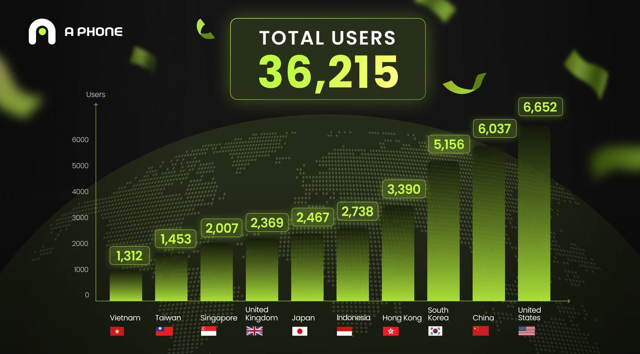
➤ Current Status of Aethir Ecosystem
According to official data, Aethir has over 200,000 users, with nodes spread across more than 20 countries and regions, and partnerships with over 10 game studios.
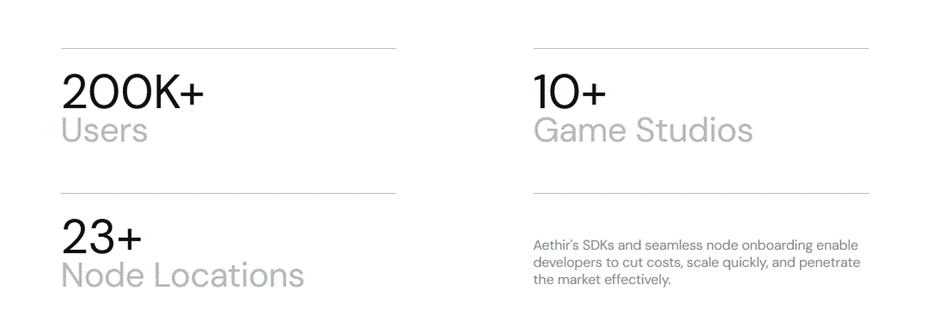
❚ Node Ecosystem
According to BlockBeats, there are over 1,000 H100 GPUs on the Aethir network. (H100 GPU is a high-performance computing and AI accelerator launched by NVIDIA, mainly used to meet the growing demand for AI and machine learning model computations)
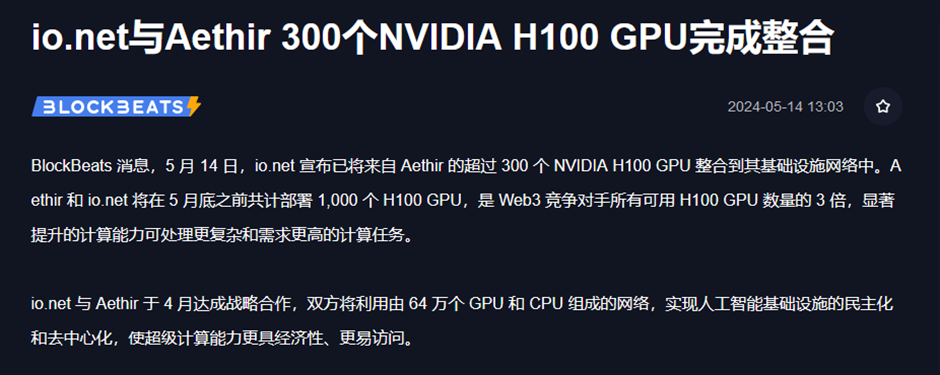
According to public data from Dune, Aethir has sold 74,673 checker node NFTs. This includes 29,544 whitelisted and 45,129 publicly sold.

❚ Collaborative Ecosystem
Aethir has established partnerships with multiple projects or organizations, including 24 projects or teams from AI, blockchain, game studios, metaverse, and Web3 infrastructure. This includes well-known institutions and projects such as Well-Link, Magic Eden, and IO.NET.
• Well-Link Tech
In February 2024, Aethir established a partnership with Well-Link Tech. Well-Link Tech, also known as "蔚领时代" in Chinese, is the cloud version developer of the famous mobile game developer miHoYo.
• IoTeX
In April 2024, Aethir was included in DePINscan, the DePIN data browser under the DePIN infrastructure IoTeX.
• CARV Protocol
Aethir's cloud gaming technology will be embedded in CARV Play. CARV Play is a Web3 game distribution platform with 2.5 million users. Aethir provides GPU computing power for CARV Play's gamers and has access to a user base of 2.5 million.
• NodeOps
NodeOps has partnered with Aethir, allowing seamless deployment of Aethir's checker nodes based on NodeOps' node services.
• KIP Protocol
In May 2024, the Web3 foundational layer for AI, KIP Protocol, partnered with Aethir. KIP Protocol was the champion project at the 2023 Chainlink hackathon.
• IO.NET
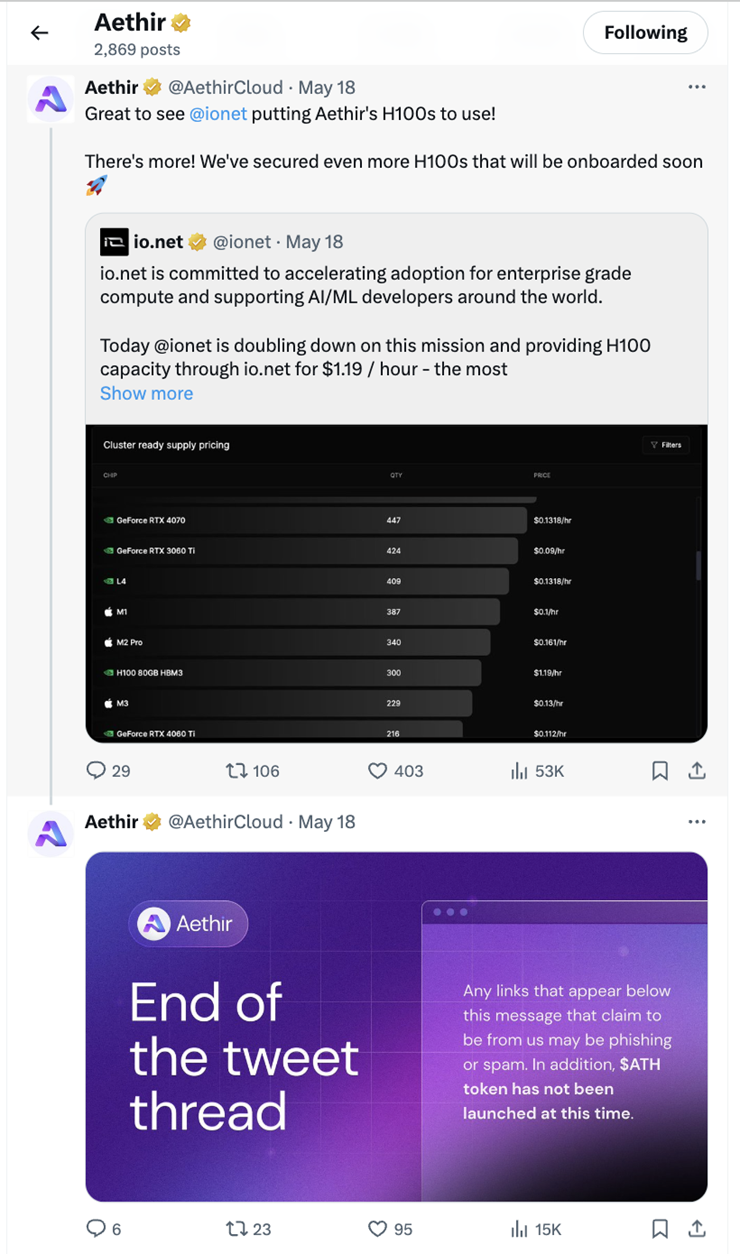
For example, Aethir has established a deep collaboration with another well-known DePIN project, IO.NET, including technical and ecosystem financing. Aethir's H100 GPUs can automatically connect to the IO network and participate in mining for both Aethir and IO.NET.
It's not just Aethir + IO.NET dual mining.
IO.NET utilizes virtualization technology, allowing the shared use of connected GPUs by multiple virtual machines. Additionally, orchestration technology and network layers can optimize the GPU network for Aethir's requirements. In summary, IO.NET enables more comprehensive utilization of GPU resources in the Aethir network. Aethir, in turn, expands the GPU node network infrastructure for IO.NET.
The collaboration between Aethir and IO.NET enhances the efficiency of supply-side (computing and rendering nodes) services for demand-side (AI, cloud gaming, etc.) applications, further driving the development of AI, cloud gaming, and other applications.
❚ Social Media
The ecological popularity of Aethir is evident through social media.
As of now, the official Aethir Twitter account has 820,000 followers, the Telegram community has nearly 270,000 members, and the Discord community has 460,000 members.
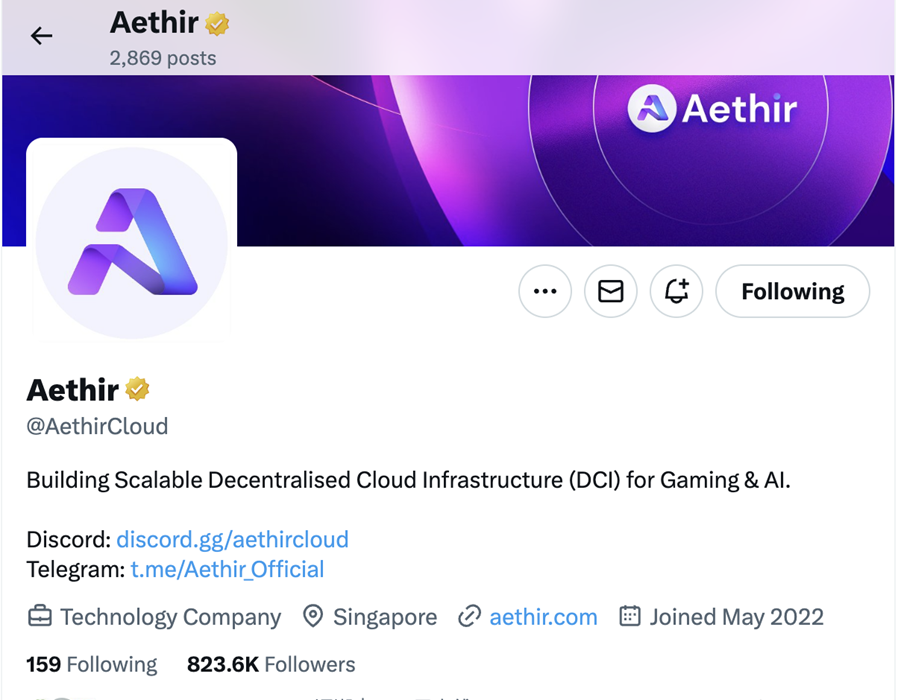
Various groups, including Aethir's node operators, crypto investors, and those interested in Web3, AI, and cloud gaming, show high levels of activity in the community.
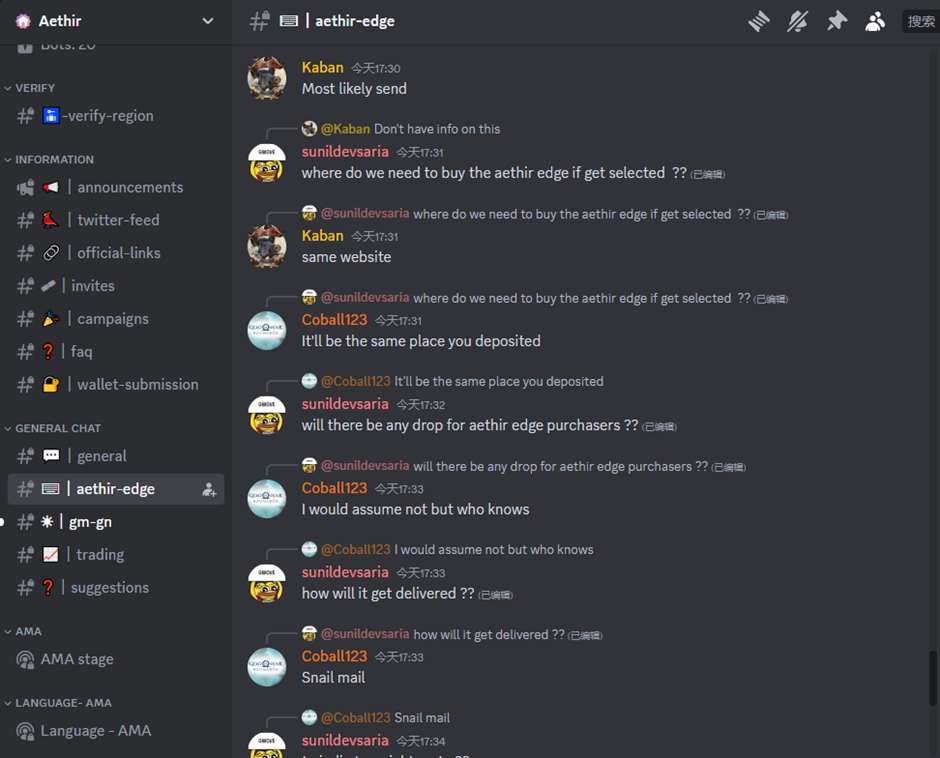
➤ Token Economic Model
❚ Token Use Cases
The token economy is the economic core of the Web3 ecosystem and serves as the decentralized incentive layer for the Aethir network and rendering business.
In centralized infrastructure services, customers pay fiat currency for computing and rendering services. In the Aethir network, customers pay with $ATH tokens for edge computing, cloud rendering, and other services. Application developers can stake $ATH to deploy AI, cloud gaming, and other applications in the Aethir network.
In centralized infrastructure services, centralized service providers ensure service quality with brand reputation and earn fiat currency revenue. In the Aethir network, nodes access the network in a decentralized manner, stake $ATH to ensure service quality, and earn $ATH rewards.
In centralized infrastructure services, centralized service providers are responsible for system management. In the Aethir network, ecosystem participants use $ATH for ecosystem governance.
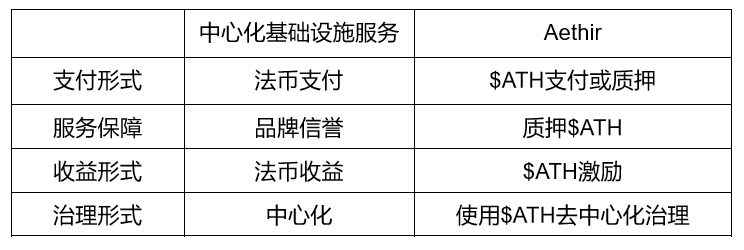
In providing decentralized computing and rendering services for AI, cloud gaming, and other applications, $ATH holds significant importance as a payment form, staking guarantee, and incentive form.
Therefore, $ATH is one of the guarantees for service quality, efficiency, and security in the Aethir network, and is a manifestation of the network's decentralization. The token distribution of $ATH also reflects these characteristics.
❚ Token Distribution
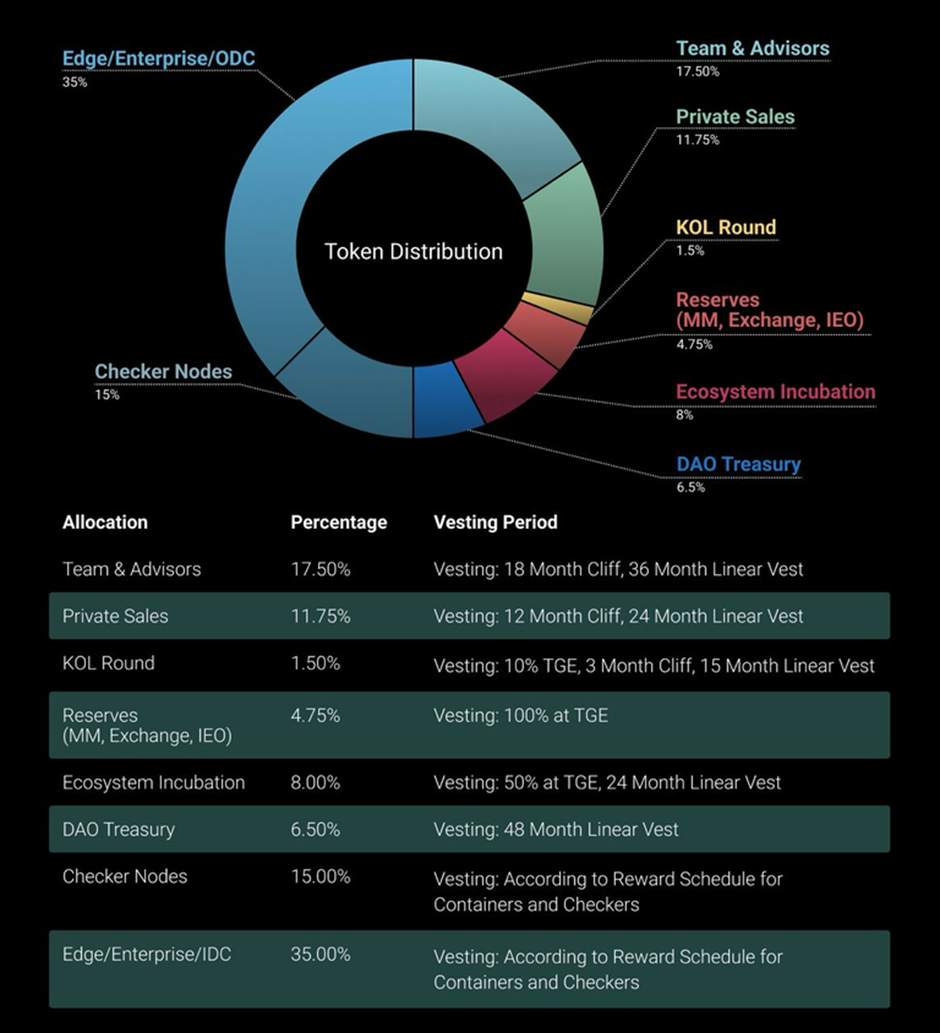
In the $ATH token distribution, apart from the Edge/Enterprise/IDC portion, none of the other allocations exceed 20%.
The team and advisor portion is relatively high at 17%, but it has an 18-month cliff and linear release over 36 months. Therefore, it will take a total of four and a half years from issuance to complete release.
The ecosystem incubation (8%) and DAO treasury (6.5%) portions are also controlled by the team, but together they only account for 14.5%. The ecosystem incubation portion has a 50% release, with the remainder linearly unlocking over 24 months. The DAO treasury unlocks linearly over four years.
The Edge/Enterprise/IDC portion is distributed based on the rewards table for container nodes and checker nodes. This portion is related to the actual application of Aethir. Nodes receive $ATH rewards for providing computing and rendering services to users. However, AI, cloud gaming, and other applications, as well as individual artists, using Aethir's services also need to pay or stake $ATH.
➤ Background of the Aethir Project
❚ Financing
Aethir has raised over $130 million through node sales and financing.
The lead investors in the Pre-Series A round include HashKey Capital, Merit Circle, Sanctor Capital, and CitizenX Crypto Ventures.
❚ Team
• Co-founder & CEO

Location: Singapore
Graduated from Princeton University in the United States, an expert in business management and brand operations. Possesses rich market and investment experience in the gaming and blockchain fields. Recognized for strategic management capabilities on LinkedIn.
Previously served at Riot Games, the developer of the game "League of Legends," as Global Head of Distribution and COO for the China region.
Risk partner at Infinity Ventures Crypto, advisor for the social gaming platform NOTA.
• Co-founder & CCO — Mark Rydon

Location: Singapore
Graduated from the University of Queensland in Australia, a senior civil engineering and project management professional. Previously worked in project management at the renowned American engineering company Bechtel.
Collaborator at the blockchain venture capital firm Flux Capital and Gaas Global, advisor for the social gaming platform NOTA.
• CTO Kyle Okamoto

Location: United States
An experienced technical management expert in the fields of communication, IoT, and edge computing.
Graduated from New York University Stern School of Business with an MBA. Previously worked in network operations, product, and marketing management at Verizon, the largest wireline communications company in the United States. CEO of Ericsson's IoT, automotive, and security business unit. CEO of Ericsson's edge computing platform Edge Gravity.
Advisor for the gamified social advertising AR platform SWAG'R, advisor for the blockchain company Theta Labs, risk scout and angel investor at the venture capital firm Alumni Ventures.
Overall, the core team of Aethir has extensive experience in both Web2 and Web3, covering management, investment, and entrepreneurship. In particular, the CTO's rich background in cloud gaming, IoT, and edge computing platform development and management aligns well with Aethir.
➤ In Conclusion
The token name for Aethir is ATH, which is quite interesting. ATH is a common term in the financial industry, standing for "All-Time High," indicating the historical peak. This demonstrates the unique operation of this project.
The institutional financing and node sales reflect Aethir's popularity with capital and the market.
Aethir's four major demand scenarios are AI, cloud gaming, virtual reality, and IoT. The project has indeed established strategic partnerships with numerous AI, gaming, and virtual reality products. These products may gradually become demanders of the Aethir network, integrating and staking $ATH with Aethir. Integrated users of AI, gaming, and other products can obtain decentralized computing and rendering services through Aethir.
Among them, AI applications have a broader development prospect and a more urgent demand for computing resources in the Aethir network; cloud gaming also shows potential and has a certain demand for edge computing and cloud rendering in the Aethir network.
Data shows that GPU computing is facing a supply shortage in the fields of AI and gaming. As a decentralized GPU DePIN network, Aethir may have a stronger competitive edge. Currently, Aethir is comprehensively expanding into the AI and cloud gaming fields.
On the computing power supply side:
Aethir's partner institutions and team members have high adaptability to products and edge computing services in AI, cloud gaming, virtual reality, and IoT.
Aethir's node network is thriving globally, with over 70,000 checker nodes providing security for Aethir.
Over 1000 top-tier GPU H100s (with the number still increasing) and a considerable number of various GPUs, the edge computing hardware product Aethir Edge, provide assurance for computing and rendering in the Aethir network.
Collaboration with projects like IO.NET strengthens the competitiveness of Aethir's computing and rendering.
On the computing power demand side:
The Web3 mobile phone Aphone is integrated into the Aethir network, providing support for the Aethir service market, in addition to advantages such as the Web3 app market, cloud gaming experience, Web3 mining, rapid deployment and testing of Dapps, as well as features like GPS blocking and one-click IP change.
In conclusion, Aethir is not just about mining; it is a new decentralized computing and rendering solution. Through blockchain, edge computing, hardware, and other technologies, it comprehensively lays out strategies for AI and cloud gaming, which can not only drive the development of these two potential industries but also have the opportunity to gain widespread application prospects in the explosion of AI and cloud gaming.
免责声明:本文章仅代表作者个人观点,不代表本平台的立场和观点。本文章仅供信息分享,不构成对任何人的任何投资建议。用户与作者之间的任何争议,与本平台无关。如网页中刊载的文章或图片涉及侵权,请提供相关的权利证明和身份证明发送邮件到support@aicoin.com,本平台相关工作人员将会进行核查。




